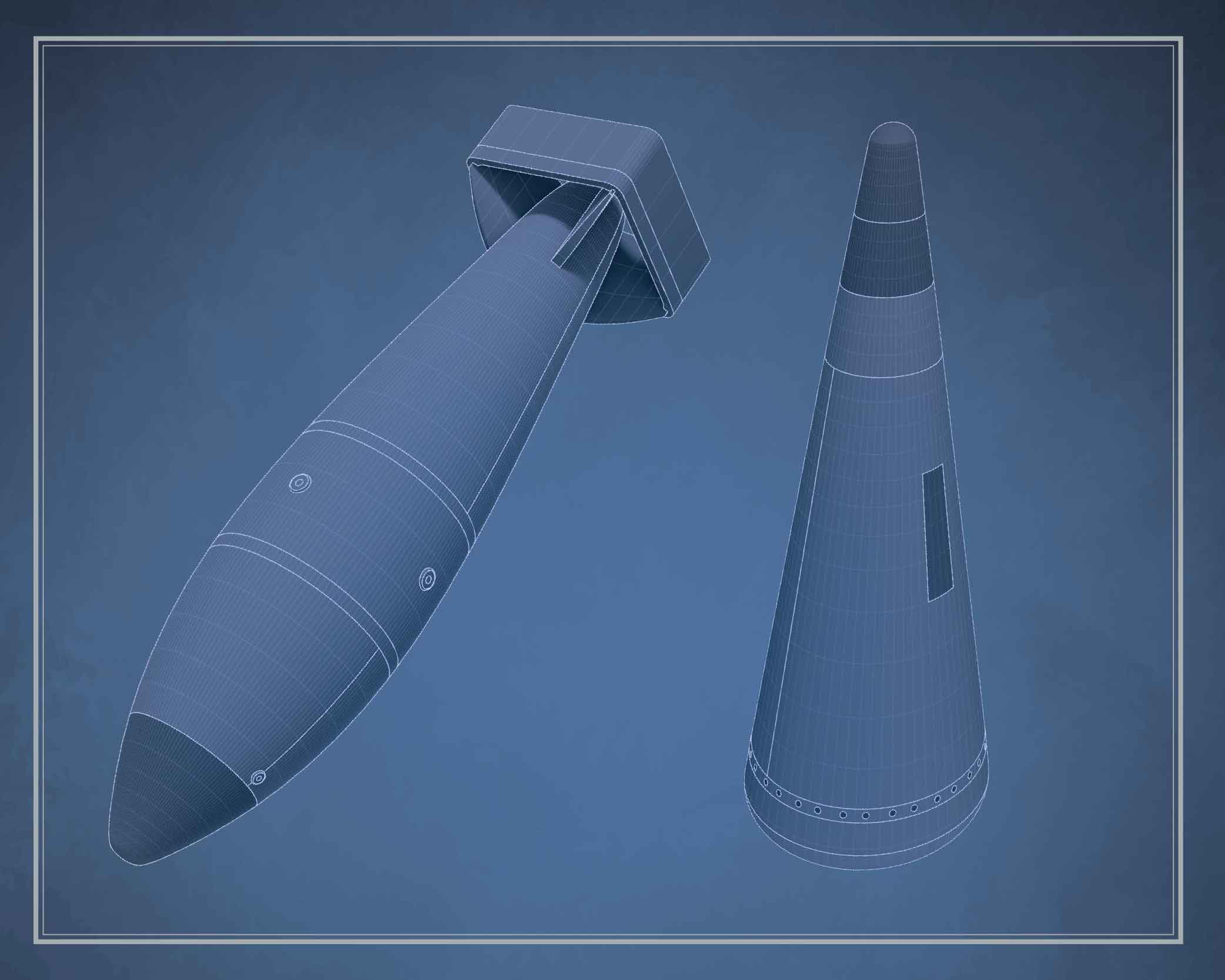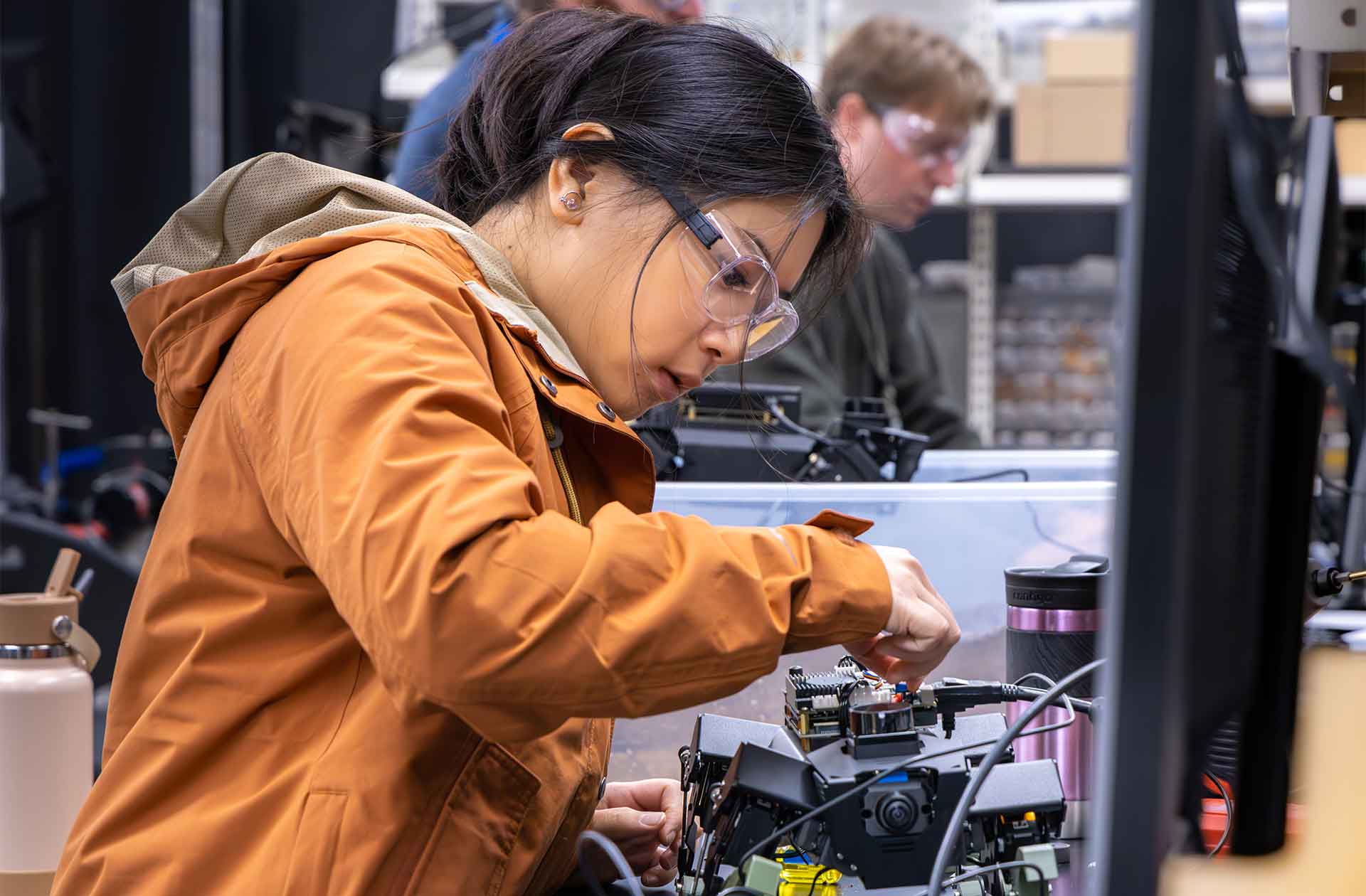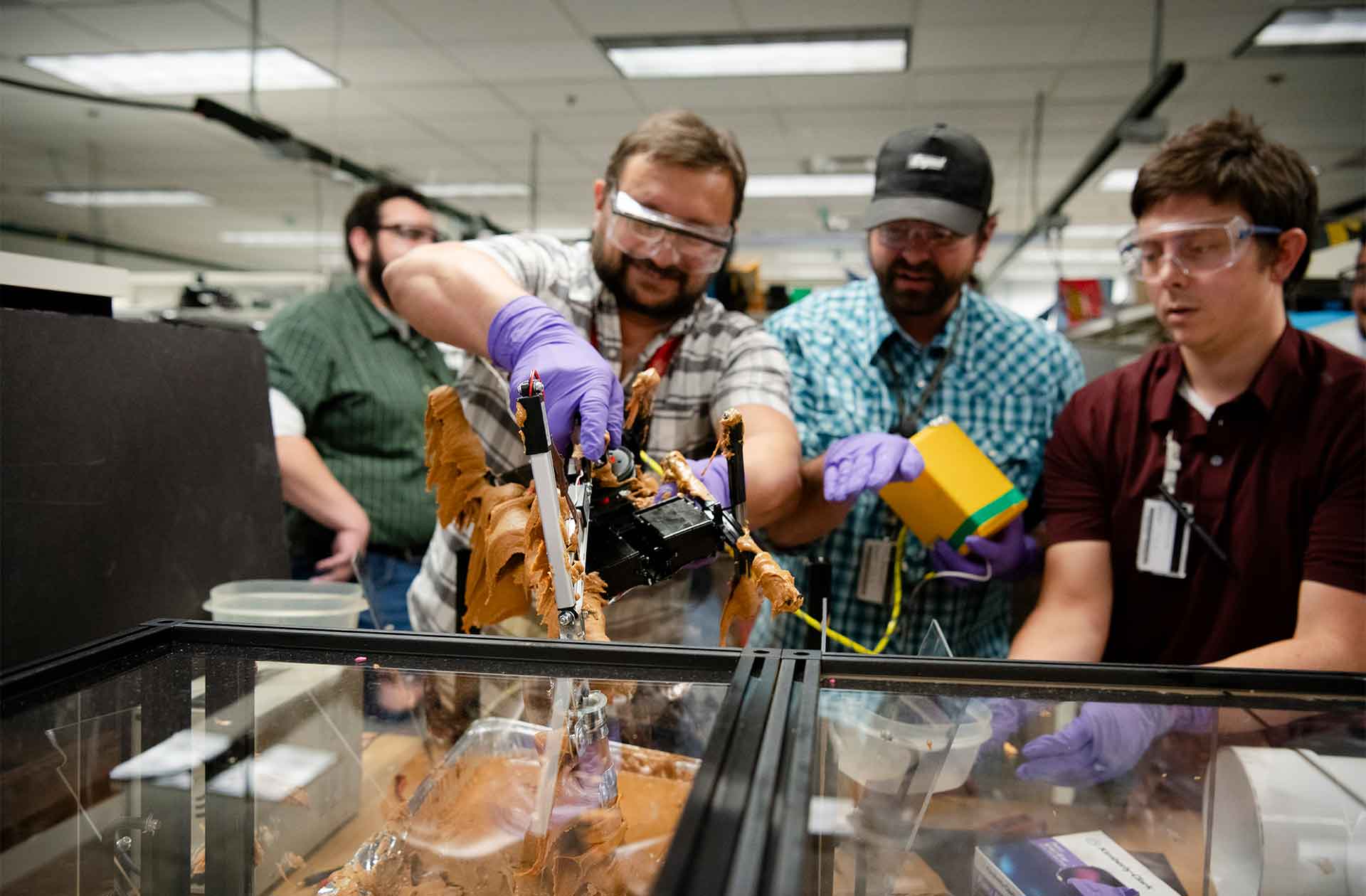The Weapons Engineering Tritium Facility
At the nation’s primary tritium research institution, Los Alamos National Laboratory researchers study the gas that powers nuclear weapons and the stars.
- Ian Laird, Communications specialist

The reliability of the United States’ nuclear deterrent—and perhaps the future of abundant energy—depends on an unusual and elusive gas: tritium. This rare isotope of hydrogen is one of the most critical, yet least understood materials in both national security and energy development.
Like all hydrogen atoms, tritium has a single proton. Tritium also has two neutrons, which makes it heavier than most other hydrogen isotopes and contributes to its unique behavior in nuclear reactions.
Tritium plays a key role in nuclear fusion—a process in which two light nuclei combine to form a heavier nucleus, releasing massive amounts of energy. The fusion of deuterium (another isotope of hydrogen with one neutron) and tritium is especially powerful, producing more energy per unit mass than any other known reaction. DT fusion, as it’s known, is the process that gives thermonuclear weapons their destructive power, and—if it can be recreated at large scales—the same process that’s key to commercial fusion energy.
But tritium, which is radioactive, is not easy to work with. That’s why, in 1989, the Weapons Engineering Tritium Facility (WETF, pronounced “wet-eff”) was opened at Los Alamos National Laboratory. WETF is the country’s primary facility dedicated to safely understanding how tritium behaves, ages, and interacts with other materials critical to nuclear weapons. Recent upgrades to WETF are enabling new research into tritium’s interactions with materials inside nuclear weapons, and proposed additions to the facility could play a role in the development of fusion energy.
From reactor to weapon
To best understand WETF’s role in tritium research, it’s helpful to understand how tritium is produced and processed for incorporation into nuclear weapons.
Because naturally occurring tritium is uncommon, the only way to secure a steady, reliable supply of tritium is by creating it using nuclear reactors. In the United States, these reactors—two of them—are housed at the Tennessee Valley Authority’s Watts Bar Nuclear Plant, located on the Tennessee River between Chattanooga and Knoxville.
The reactors use a specially designed component called a Tritium-Producing Burnable Absorber Rod (TPBAR). Each TPBAR contains a core of lithium aluminate, a compound that includes lithium-6. When lithium-6 is bombarded with neutrons inside the reactor, it undergoes a nuclear reaction that produces tritium gas and helium-4.
To safely contain the tritium, each TPBAR also includes a layer of material—typically a zirconium alloy—that captures and holds the tritium until it can be extracted. The rods are designed to withstand the harsh conditions inside a nuclear reactor while gradually accumulating tritium over months of operation.
Once the TPBARs have completed their irradiation cycle (a typical cycle is 18 months), they are carefully removed from the reactor and sent to the Savannah River Site (SRS) in South Carolina. At SRS, tritium is extracted from each rod and purified. The tritium is combined with deuterium, and the mixture—called boost gas—is transferred into sealed metal reservoirs. Each reservoir is part of a larger assembly called a gas transfer system (GTS). Once filled with boost gas at SRS, a GTS is placed into a nuclear weapon either at the Pantex Plant in Amarillo, Texas, or at a military base. If the nuclear weapon is ever deployed, the boost gas will be injected into the weapon’s core at precisely the right moment. The gas acts as a “booster” by facilitating a brief but intense fusion reaction that dramatically increases the overall explosive power of the weapon.
A legacy of innovation
Tritium is radioactive—it decays over time into helium-3, which is not useful as boost gas in nuclear weapons. This challenge necessitates that the GTS of every nuclear weapon be swapped out every so often. Because the U.S. Air Force and Navy have day-to-day custody of nuclear weapons, this important task occurs at military installations.
Thanks largely to the efforts of Los Alamos Chief Engineer for Gas Transfer Systems Brad Meyer, modern-day, advanced GTSs are designed with replacement in mind. Over decades, Meyer has fine-tuned advanced GTSs to be accessible so they can be changed as needed. These systems were designed not just for performance, but for maintainability and safety over the long haul. Six out of the seven weapons in the current nuclear stockpile contain GTSs that were designed at Los Alamos by Meyer and his team and then manufactured at the Kansas City National Security Campus.
“Brad has exhibited remarkable innovation and technical acumen, guiding a team of engineers to achieve remarkable strides in this critical domain,” wrote former Los Alamos Director Charlie McMillan in April 2024. “These achievements have fortified nuclear security and ensured that [Los Alamos] can mitigate the effect of aging on the stockpile.”
Tritium science at WETF
Because the United States no longer conducts full-scale nuclear tests, GTS designs must undergo rigorous testing under simulated conditions to validate design and safety requirements. GTS designs are exposed to low-pressure environments, extreme temperatures, and various forms of stress to ensure that the GTS will perform as expected in a real-world scenario and to assess how it is aging.

Much of this research and validation takes place at WETF, a 5,000-square-foot facility where researchers can assemble, disassemble, analyze, and test GTSs in a secure, controlled environment. “The state-of-the-art infrastructure at WETF has been essential to the advancement of GTS technologies,” says senior engineer Chad Schmidt. “Our capabilities at Los Alamos will continue to support innovative future designs.”
At WETF, tritium work is performed using gloveboxes—sealed chambers inside which technicians, using gloves, can manipulate materials without exposing themselves to radiation or contamination. These gloveboxes can be reconfigured to accommodate different experiments, giving WETF a high degree of agility.
Traditionally, much of the research at WETF has focused on how tritium affects weapon components as they age. Over time, tritium can diffuse into nearby metals, making them brittle or changing their performance in subtle but significant ways. Understanding these effects has helped weapons designers make smarter decisions about materials and component lifetimes.
Recently, WETF has entered a new era of experimentation—one that brings a powerful element into the mix: plutonium.
In 2024, Los Alamos launched the Plutonium Coupon Studies (PuCS)—a series of tests that introduced plutonium into WETF for the first time in more than 25 years (because of plutonium’s radioactivity, parts of WETF had to be updated to accommodate the high-hazard element). The PuCS experiments allow researchers to observe directly how tritium interacts with plutonium under controlled conditions.
“This is a rare capability,” says Chandra Savage Marsden, a senior scientist with the Gas Transfer Systems group. “Very few places in the world can even attempt these experiments, let alone do them safely and with this level of precision.”
Following PuCS, a second experiment, Coda, is now in development. Set to begin in spring 2026, Coda will explore how tritium and plutonium behave together under high-pressure environments—conditions like those that would exist inside a nuclear weapon as it detonates.
These studies aren’t just important for the science they produce—they’re also a proof of capability. Launching PuCS and preparing for Coda shows that WETF can rapidly stand up new research programs, retool gloveboxes, and integrate new materials without compromising safety or schedule.
“WETF is stepping up to handle more complex and mission-critical work,” Marsden says. “It shows what’s possible when you combine decades of experience with modern infrastructure.”
The supply challenge
As of today, tritium supplies for the U.S. nuclear weapons complex are secure. The dual-reactor operation at the Watts Bar Nuclear Plant produces enough irradiated TPBARs to meet national defense needs. But what happens if the government or even private companies start needing tritium for fusion experiments?
“Right now, tritium production isn’t the bottleneck,” Marsden says. “But if fusion becomes commercially viable—and especially if it scales quickly—we’re going to need new ways to produce, manage, and distribute tritium.”

That’s where WETF could play a pivotal role. Thanks to its decades of experience handling, analyzing, and repackaging tritium, WETF is uniquely positioned to become a central node in the fusion research ecosystem.
WETF already has the infrastructure and experts to handle tritium and deuterium. These capabilities could be repurposed—or expanded—to support the fusion industry’s growing needs. In fact, discussions about such a transformation have already begun.
“We’ve had several companies reach out asking how we might collaborate,” Marsden says. “There’s interest. The challenge is setting it up in a way that aligns with our national mission.”
To accommodate future partnerships, Los Alamos is exploring how part of WETF could be turned into a dedicated fusion lab, capable of supporting commercial research and development without compromising the mission-sensitive work that WETF already performs.
The most promising site is an empty building connected to the main WETF structure. By strategically modifying internal walls and infrastructure, the Lab could create a dual-use facility that supports both national security and energy research.
This idea is still in its early stages, but it reflects a growing reality: fusion science and nuclear security are no longer separate conversations. They are converging, and tritium sits at the center of that convergence.
The road ahead
As the United States continues to modernize its nuclear deterrent while also investing in energy innovation, WETF will become increasingly important, as it is the only place in the country equipped to handle tritium research and development (R&D) with gram-scale quantities of tritium (other places do R&D with smaller quantities). Whether used to boost a nuclear weapon or power a fusion reaction, tritium has become one of the most important resources in the nuclear world. Its short half-life, complex handling requirements, and dual-purpose applications make it a strategic material unlike any other. Lighter than air but packed with power, tritium might prove to be the most valuable building block of all. ★








